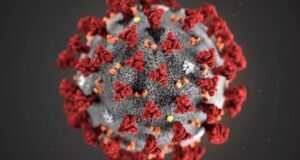
Despite a great success in treatment of the infectious disease, tuberculosis (TB) still remains a serious public health problem in the country with one person falling ill with it every minute and one dying of the disease every 12 minutes here.
According to the World Health Organization (WHO), six of the global high TB burden countries are in the Southeast Asian region — Bangladesh, Democratic People’s Republic of Korea, India, Indonesia, Myanmar and Thailand – and in terms of Rifampicin-resistant (RR) and multi-drug-resistant TB (MDR-TB) cases, Nepal has replaced Thailand in the high-burden list for the region.
“Many TB patients have not yet been detected in the country. There’s no alternative to raising awareness among people about the disease. Now our major challenge is to ensure community engagement in controlling TB,” Prof Dr Ahmedul Kabir, additional director general (Planning and Research) of the Directorate General of Health Services (DGHS), told the Daily Sun.
He said people will have to be made aware of symptoms, diagnosis and availability of treatment of TB in a bid to either eradicate or control the disease within 2030.
The DGHS said a total of 307,561 new TB patients were diagnosed in the country in 2021 and 67,439 other patients are believed to have remained undetected.
Of the total, 4,500 patients were diagnosed with MDR-TB.
“Around 42,000 people died of TB in Bangladesh in 2021 which is alarming for us. Although the situation has now improved, we have to reduce the fatality,” Dr Md Mahafuzer Rahman Sarker, Line Director, TB-L & ASP of the DGHS, said.
Of the total TB cases, 80 percent are detected while around 20 percent are still undiagnosed, he said. “As per our target to control TB, we have to ensure a 95 percent TB detection.”
The DGHS official said one person falls ill with TB every minute and one dies of the disease every 12 minutes in the country.
Claiming that the country has made great success in ensuring TB treatment and saving lives from the disease, he said nearly 45 deaths occurred in every 100,000 population in 2015 which came down to 25 deaths in 2021.
Mahafuzer Rahman said the government has decentralised the diagnosis and treatment services of TB so that patients can be diagnosed and they can take treatment at free of cost at 44 chest disease clinics, seven chest disease hospitals, medical college hospitals, district hospitals, upazila health complexes and community clinics across the country.
Health and Family Welfare Minister Zahid Maleque said over 100 TB patients die every day in the country while 3.5 percent of the total patients are children.
“We provide TB diagnosis services and drugs to patients at totally free of cost. The TB drug is also being currently manufactured in our country,” he said.
The minister also underscored the need for early detection and treatment of TB for recovery and to reduce the mortality.
Mentioning that the government is working to ensure treatment for the TB patients and raising awareness to this end, he said a platform of parliamentarians will be formed to this end.
According to Centers for Disease Control and Prevention of the US, tuberculosis is caused by a bacterium called Mycobacterium tuberculosis and the bacteria usually attack the lungs, but TB bacteria can attack any part of the body such as the kidney, spine and brain.
“Not everyone infected with TB bacteria becomes sick. As a result, two TB-related conditions exist: latent TB infection (LTBI) and TB disease. If not treated properly, TB disease can be fatal,” it added.
WHO said without treatment, the death rate from TB disease is high (about 50 percent). With currently-recommended treatment (a 4–6 months course of anti-TB drugs), about 85 percent of people can be cured. Regimens of 1–6 months are available to treat TB infection.
In 2014 and 2015, all member states of the WHO and the United Nations (UN) committed to ending the TB epidemic through their adoption of WHO’s End TB Strategy and the UN Sustainable Development Goals (SDGs) (7, 8).
The strategy included milestones (for 2020 and 2025) and targets (for 2030 and 2035) for large reductions in the TB incidence rate.
Under the Mycobacterial Disease Control (MBDC) unit of the DGHS, the National Tuberculosis Control Programme (NTP) is working with a mission to eliminate TB from Bangladesh.
 Weekly Bangla Mirror | Bangla Mirror, Bangladeshi news in UK, bangla mirror news
Weekly Bangla Mirror | Bangla Mirror, Bangladeshi news in UK, bangla mirror news







